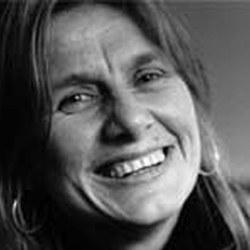This project, which explores the life of a 15th century Tibetan princess and her line of female reincarnations at the bSam-sdings monastery, involves a team of researchers from the Mongolia and Inner Asia Studies Unit (University of Cambridge) and the British Library as well as a wide-ranging collaboration with Tibetological institutions across the world.
The bSam-sdings rDo-rje phag-mo has been an important institution in Tibet for more than five centuries: the first bSam-dings rDo-rje phag-mo, a daughter of the King of Gung-thang, was a woman who gave up her role of royal consort and opted for a religious life. She established ritual traditions for women but took vows as if she were a male member of the sangha and obtained full ordination. Later in her life she began to be seen as an embodied goddess, became the tantric partner of spiritual masters such as Bo-dong Phyogs-las rnam-rgyal and Thang-stong rgyal-po, and founded the monastery of bSam-sdings in southern Tibet. After her death (1455) her disciples looked for her reincarnation as an emanation of the deity rDo-rje phag-mo (Skt Vajravarahi). Once she became institutionalised she acquired a symbolic role in relation to the great religious and political authorities of her time, initially the Karmapa and then the Dalai Lama. The 12th rDo-rje Phag-mo was born in 1938, was co-opted by the Chinese administration as a leading woman, and as a representative of her ethnic group and religion. She thus acquired an important and complex political position that has become instrumental in the revival of Buddhism in Tibet since the 1980s.
Despite the fact that the rDo-rje phag-mo has been mentioned in passing in many scholarly works about Tibet and that she has inspired novels and films (e.g. “Female Living Buddha” 1985), no study has been devoted to her, except for two articles in Tibetan, one by Tashi Tsering (1993) and another by the 12th rDo-rje phag-mo and Thub-stan rNam-rgyal (1995). It has recently become possible to retrieve new sources that cast light on the life of the early incarnations of the rDo-rje Phag-mo and on the Bo-dong-pa school of Tibetan Buddhism, the little-known religious tradition to which she belongs. These sources comprise the biography of Chos-kyi sgron-ma (late 15th century), the Bo dong chos ‘byung ( ca.1560), prayers to the reincarnation-line of bSam-sdings monastery and several texts from the dPal de kho na nyid ‘dus pa collection. The most important of these sources, the biography of Chos-kyi sgron-ma not only describes the life of an extraordinary woman but is also particularly informative on the question of whether women in Tibet were allowed to obtain dge- slong-ma (Skt. bhiksuni) vows and thereby obtain full ordination, a highly controversial issue among Buddhist communities of the present day.

